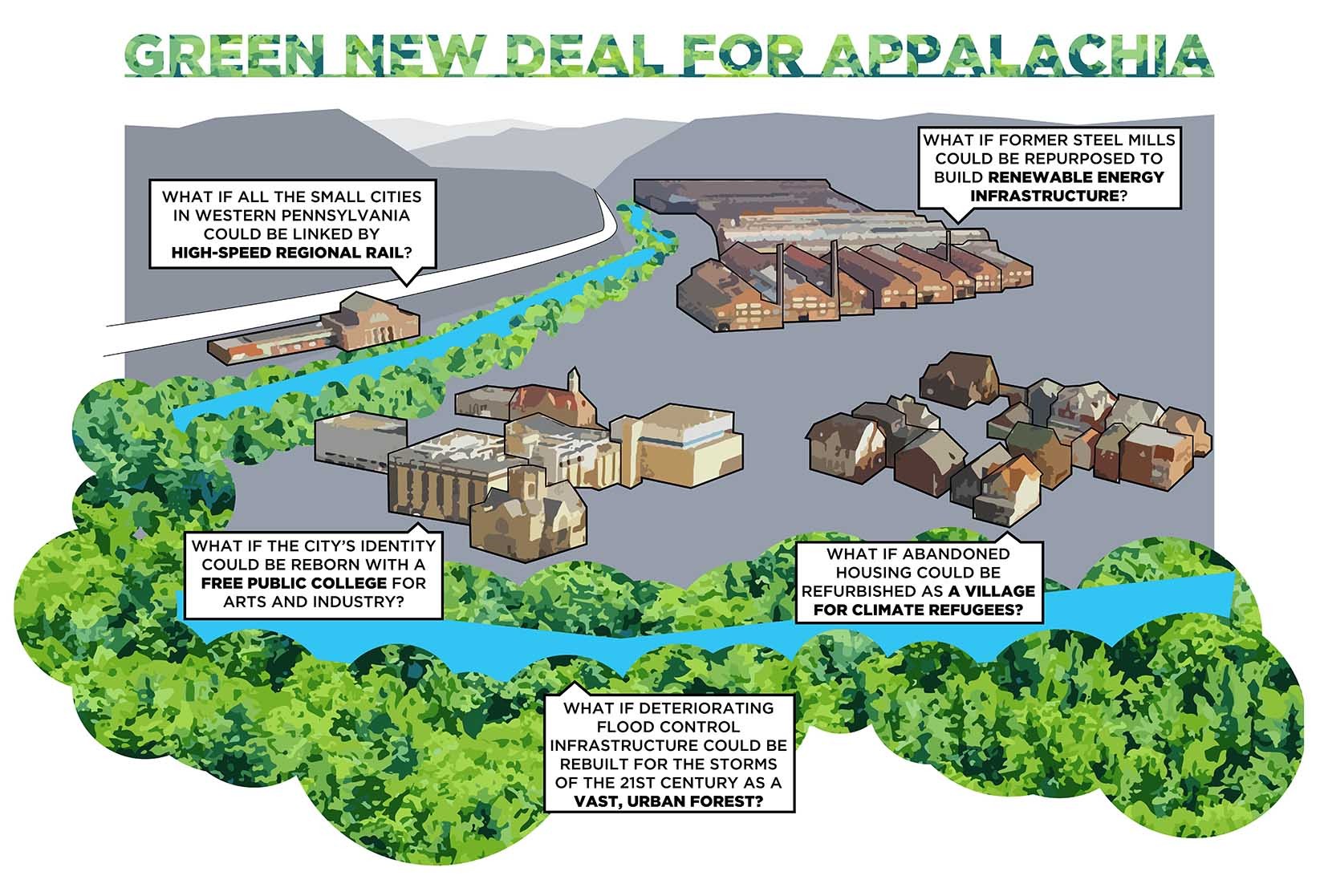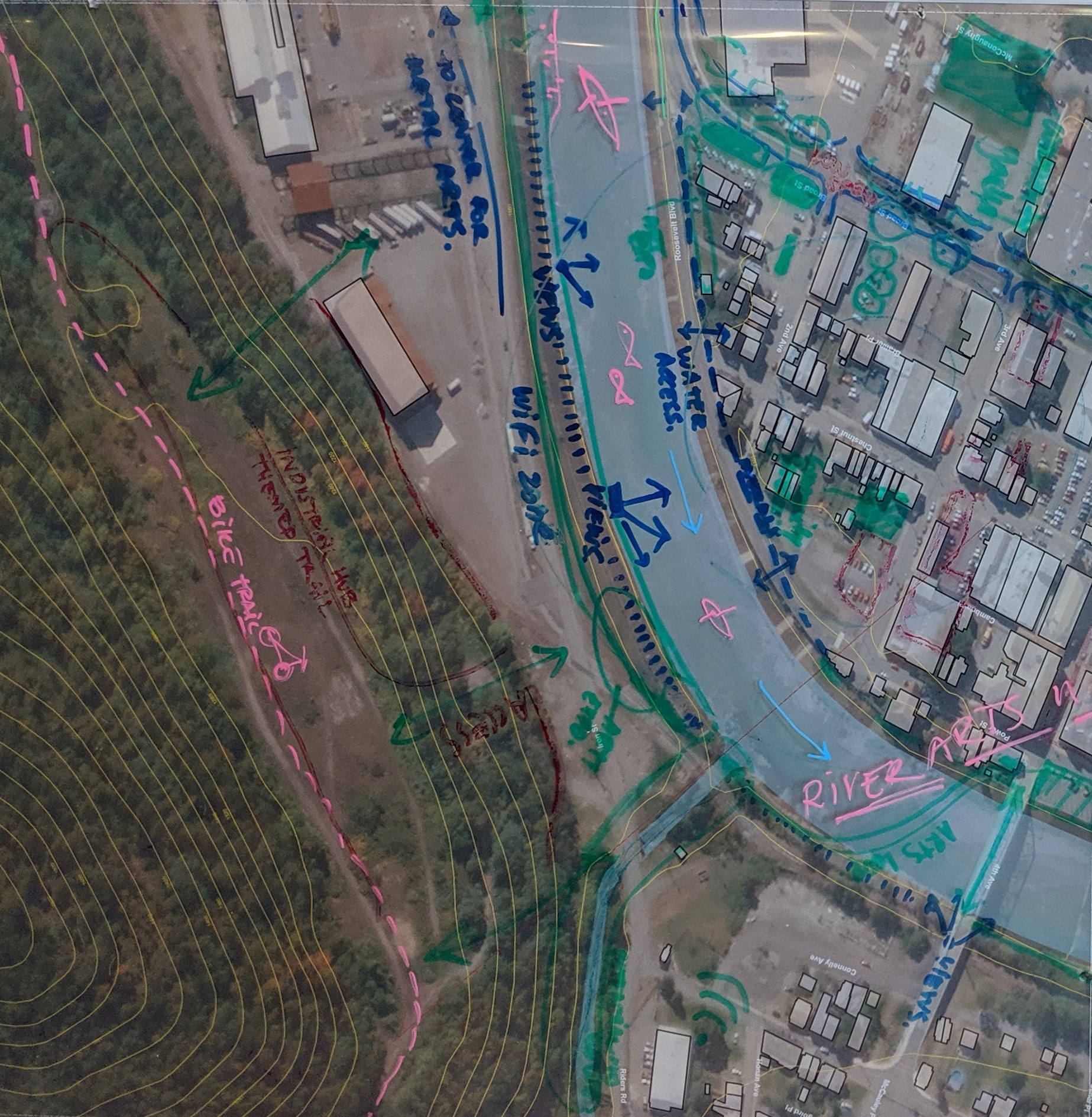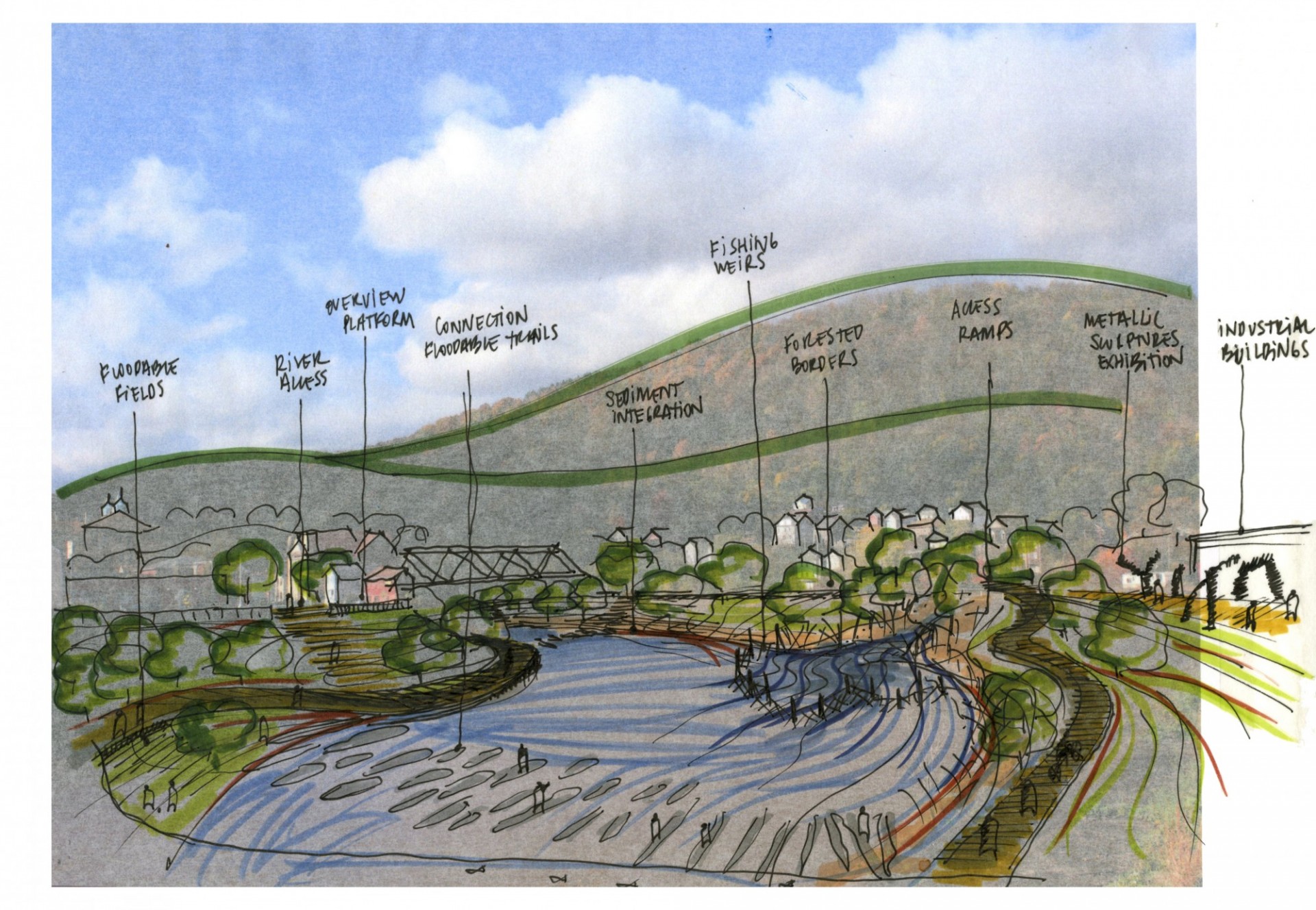In the contemporary neoliberal city, rivers have become magnets for intensive development, a manifestation of the back-to-the-city movement. Familiar built indicators include fortified mixed-use towers and commodified riverside promenades. But that pattern doesn’t reflect the experiences of thousands of towns that dot the American landscape.
One example is Johnstown, Pennsylvania, a former steel production hub that has, like many other Appalachian towns, seen better days. Located in the precipitation-rich eastern Ohio River Basin, Johnstown has always been prone to floods, but a particularly costly one (in both lives and dollars) in 1936 prompted the Works Progress Administration to build flood protection infrastructure. Part of that was the channelization of 14 miles of river, which has since been neglected, both technically and culturally.
“The river is in this concrete box,” says Thaddeus Pawlowski, a Johnstown native and professor at Columbia GSAPP, where he is managing director of the Center for Resilient Cities and Landscapes, a “vehicle” for research on community responses to the climate emergency. Late last year, Pawlowski and Center codirector Kate Orff brought their students to Johnstown to conduct workshops with residents and political leaders on how the river could anchor new vectors of local resilience. “This is not a place where the conversation about the Green New Deal is being talked about over kitchen tables,” Pawlowski remarks. “But they were a natural partner to explore what it could mean on the ground in a frontline community.”
Though national political discourse seems to have poisoned all conversation about the country’s future, what emerged from the workshops were broadly agreed-upon proposals for Johnstown, recalls Pawlowski. “It’s been an evolution toward resilience,” he says, pointing to a near consensus on ideas such as restoring train connections, combating brain drain, moving toward a post-carbon economy, and rehabilitating riverfront land. (“There’s no partisan divide about needing high-speed rail,” Pawlowski notes.) Over the course of the conversations, it became clear that enhancing the flood protection infrastructure could advance other goals, like revitalizing civic space and local commerce.
“I think people in all these little towns need to expect more from the government and their leadership,” Pawlowski reflects. “We can develop a new paradigm and it can spread.”



